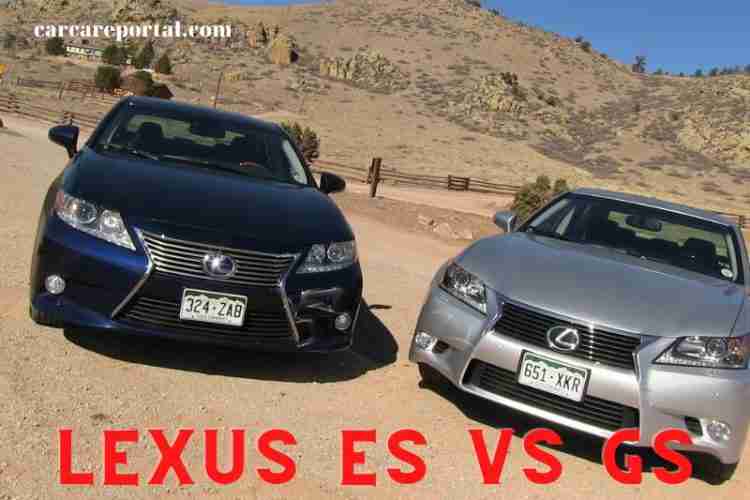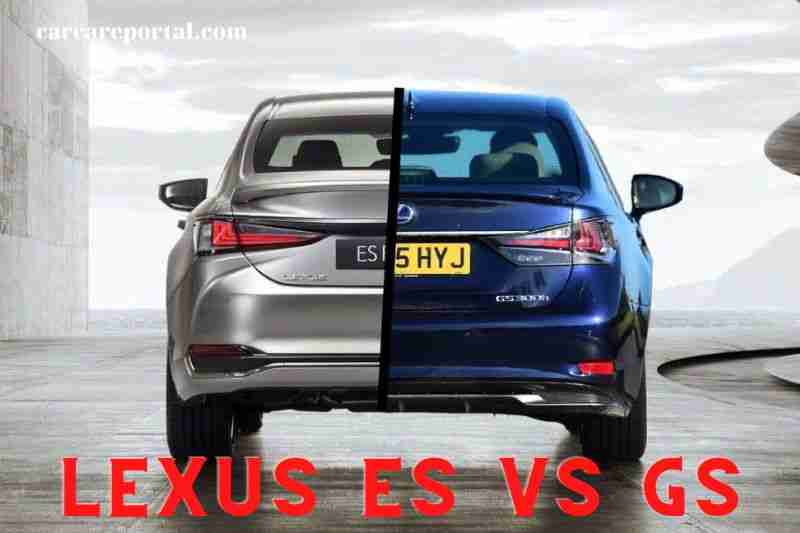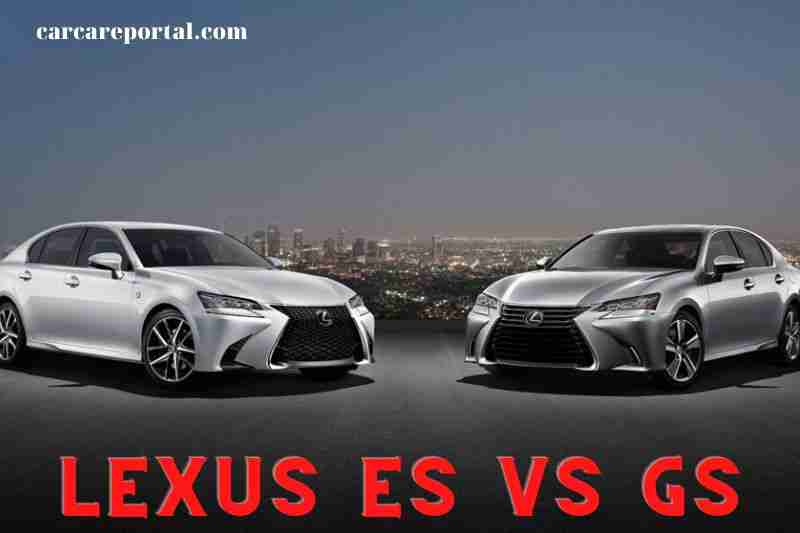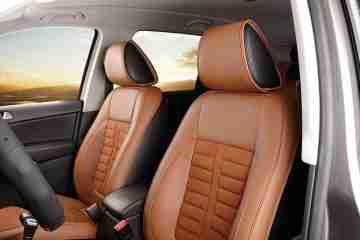Lexus ES vs GS: Which Is Better? 2022

When it comes to choosing between the Lexus ES vs GS, there are several factors to consider. The ES is the entry-level luxury car in the Lexus lineup, with a focus on comfort and convenience features. It offers a more affordable price tag than its bigger brother, the GS.
The GS, meanwhile, is the high-end model, with a sportier design and more powerful engine options. Both models offer plenty of luxury features, but they’re tailored differently to meet different needs.
If you’re looking for an affordable luxury sedan that offers all the amenities of a full-size vehicle, the ES may be the best choice. But if you want something with a bit more power and style, the GS is the way to go. Ultimately, the decision comes down to your individual preferences and budget.
Lexus ES 350
The ES300h is awe-inspiring for its ride quality, luxury and comfort. If you’re looking for a genuine driver’s car, then a Lexus RCF is a better choice. If you’re looking for a vehicle that can transport passengers in a peaceful, elegant, luxurious and efficient way, you should look no further.
Lexus GS 350
Oddly, despite all the positive things I’ve said concerning this particular GS F Sport, it could be more cohesive. It’s not equipped with that particular feature that the Europeans are missing in their vehicles, especially those of the BMW 5 Series, and with its aging interior tech, the car is struggling to keep up.
It’s a car designed for specific tastes as well as being far more California as opposed to Straya. That’s fine; however, it needs to translate into many buyers. Despite that, it’s different from any German competitors (or its frightening Japanese rival, Infiniti) that could claim an enthralling sales performance.
The GS is an excellent car, yet it’s different from my taste. The GS F, however, is a different matter.
Lexus ES vs GS
1. Start Price and Performance
There are some notable differences if you’re searching for the difference between Lexus ES and GS models. If you compare the new Lexus ES vs. GS in terms of cost, it is evident that the Lexus ES is the more economical option, with a price starting at $39,000 MSRP*, whereas the GS comes with a higher cost that is $51,065 in MSRP.
Apart from being more affordable and a better value, the ES also has a superior average fuel efficiency rating on West Palm Beach area roads compared to the brand-new GS. Find out how the performance specs for the two models compare:
Lexus 350 ES
- 3.5L V6 engine
- 302 HP
- 267 pounds of torque
- 8-speed automatic transmission
- 32 highway mpg, 22 in the city.
- Front-wheel drive is standard.
Lexus 350 GS
- 3.5L V6 engine
- 311 HP
- The torque is 280 lb-ft.
- 8-speed Sport transmission
- 20 city-mpg/228 highway
- standard with front-wheel drive.
- All-wheel drive is available.
- The manual control of shifts and the paddle-shifters

2. Interior Space and Features
In comparing two models, the Lexus ES 350 vs. GS 350, you’ll find both come with the latest safety features and cutting-edge entertainment technology.
The two models offer adaptive cruise control, a rearview camera blind-spot monitor, a navigation system rear cross-traffic warning, and many more. There are some notable distinctions in the following sections:
Lexus 350 ES
- Xenon headlights
- Siri Eyes Free
- Leather upholstery
- Mark Levinson audio system
- Sound-deadening cabin
- Seats that are ventilated
- Bamboo interior finishes
Lexus GS 350
- Xenon headlights
- Power-closing trunk
- Front seats with ventilation
- Heated seats in the rear
- Night vision camera
- Bluetooth technology
3. Design
Lexus 350 ES
If you believe that most Lexus models look alike, head over and visit Lexus’s Audi, BMW or Benz websites to look at their lineups. Compared to the offerings of the top car makers, Lexus models look wildly different from one another.
The opinions on the ‘Spindle Grille are as diverse as opinions on religion or politics. I love the way that it is bold and upfront. Grille’s design is.
However, the thing that is strange to me is that it was the only area on the outside where designers could be a little adventurous. The rear, although well-designed, is dull. The bottom could be more appealing to the style of the front.
The ES300h’s roofline with its rear is gorgeous in its sweep, which is in a fastback fashion towards the lid of the boot. This is a more striking design but still appealing because the design flows together. A similar can be said about the fit and finish – the gaps in the panel are nearly perfect.
The same perfection is evident in the cabin, where the materials and artistry are in line with high-end German rivals in some areas (the doors, door knobs leather and the instrument panel with digital, for instance); however, the car is disappointing in other areas that reveal the low-cost Toyota connections to the family (the Air vents in the steering wheel, and the display).
The interior design of the ES300h’s will only set some people’s worlds on blaze. However, some people love its asymmetrical style with different texture surfaces that swoop, fold and hang out against one another’s space. Please take a look at these photos. They’re from the Sports Luxury that is over those of luxury in the two-grade lineup.
The visual difference between the grades is not significant. The luxury is equipped with 17-inch alloys. The Sports Luxury comes 18 inches.
New colors available for this model include Glacial Ecru (the sandy shade of the test car in the photos) and Radiata Green.
The interiors of both grades are available with a range of color options that include Black, Chateau, and Topaz. The only exclusive color scheme for the cabin of the Sports Luxury comes in Rich Cream, too. The steering wheel for the Sports Luxury model comes with wood trim.
Among several of the most peculiar features of the cabin design of the ES300h are the controls for driving modes and the traction control. They are positioned like horns on the instrument cluster’s hood and appear to be things the driver will always reach for. However, the majority of people need to touch the traction control buttons.
A new-generation car is built on new foundations. The ES300h is built upon the GA-K platform, which supports the Camry. This platform makes up the current global design that Toyota and Lexus have adopted for their vehicles.
Its dimensions for the ES300h in case you’re wondering whether it’s suitable for a garage less than 5.0m wide, 1.9m wide and 1.4m tall.

Lexus 350
The GS is getting old; however, it’s slightly heavy-handed in the headlights and the slabby area along the sides. It’s not looking ready to take on the road, not even when you add its F Sport additions, but it also doesn’t look sexy because of the massive blacked-out spindle grille. It’s which is a Lexus trademark.
The rear is excellent; however, it is a little too bluff. It’s also not thrilling or enthralling.
There’s not much changed inside the cabin, but it’s an excellent cabin, and it will remain away from a few snarls (the gear shifter is a steal).
It’s also warm and welcoming, and comfortable. There are lots of nice materials and comfy seats – exactly what it’s meant to be. Whatever you think of its looks, it’s one thing for certain – If anyone makes cars superior to Lexus, it’s a concise list.
4. Fuel consumption
Lexus ES 350
This is why you need the hybrid. To reduce fuel consumption? To save fuel? The electric motor can run the car at significantly lower speeds around parking lots or in bumper-to-bumper traffic. In 104km of urban and open-road usage, I discovered that my fuel efficiency on the Sports Luxury model was 5.4L/100km.
Lexus’ official fuel economy figures for both luxuries and Sports Luxury are 4.6L/100km.
Lexus GS 350
A real-world 13.7L/100km is a definite far cry from the advertised 9.3L/100km, which isn’t a huge difference. It’s a heavy and big car, and it’s a penalty. It’s a fast drinker of fuel, so the fuel tank of 66 liters can be drained quickly. It’s important to fill it up with 95 RON or greater.
5. Safety
Lexus 350 ES
The Lexus E300h was given the highest five-star ANCAP rating at the time of its test in September 2018. Both Luxury and Sports Luxury levels include 10 airbags, an AEB system with pedestrian detection, lane-keeping assistance, and adaptive cruise control.
If you upgrade to Sports Luxury, you’ll also get adaptive high beams, which is acceptable. However, you’ll also receive features that ought to be included at the bottom of the line, including a blind spot warning and a rear alert for cross-traffic – that are standard on the Camry SL for half the cost.
Although there’s no doubt that the ES300h is secure, it could be more efficient in autonomous technology, which is used in vehicles like the E-Class.
We used two ISOFIX mounts and three top-tether anchors on the second row to anchor our four-year-olds and their car seats.
Lexus 350 GS
The GS has 10 airbags, ABS control for stability and traction, blind spot monitoring, front cross-traffic alerts, rear AEB active cruise control, high auto beams, and Lane departure warnings with the lane keep assist.
The GS does not have an ANCAP or Euro NCAP rating, while America’s IIHS (Insurance Institute for Highway Safety) rating is appropriate for each critical crash-worthiness measure. The IIHS set of tests is very rigorous but is different from the ANCAP/Euro NCAP standards we use.
Read also:














No Comment